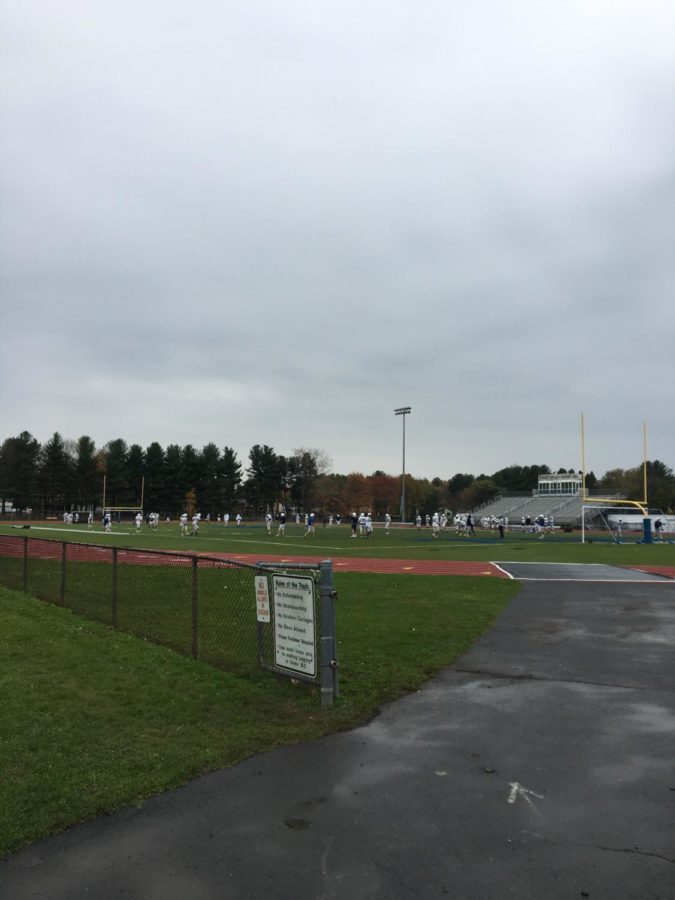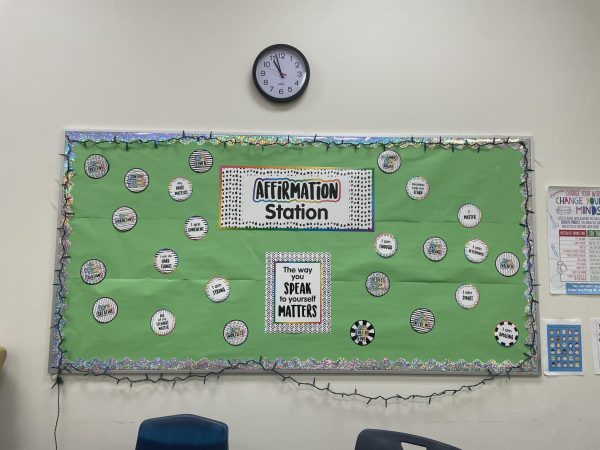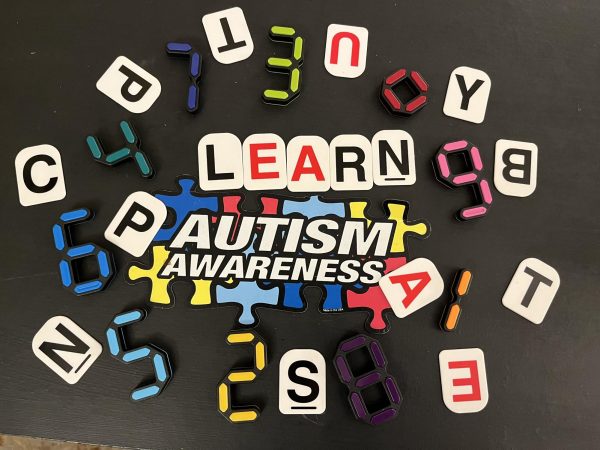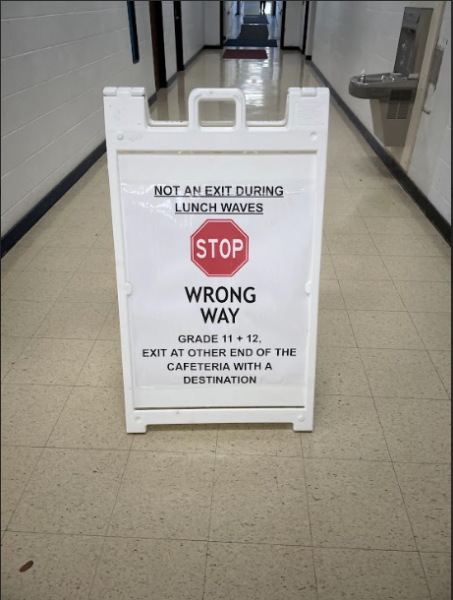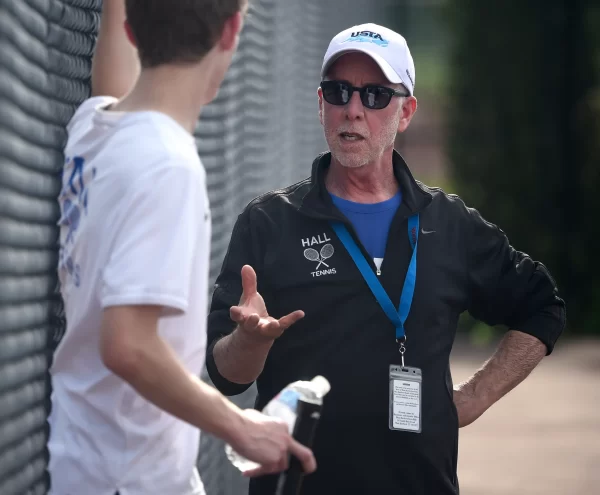Is the Turf Really Worth It?
How Hall’s artificial surface is altering the games we know and love
Hall’s football team uses the turf for a Wednesday afternoon practice
In 2007, an artificial turf field was added to Hall High School, begging questions about how this would affect gameplay, injuries and practices.
This new surface has brought up a series of questions about its effect on gameplay. In soccer, when playing on grass, “the ball is in the air most of the game, so it’s like all headers, and basically like physical style.” said Jonah Kershen, varsity soccer captain. Senior captain Thomas Knox III said if they play a team that usually plays on grass, on the turf, then the result would be “5-0. But if we play them there it’s like 1-0.” He goes on to talk about the effect of the surface on how it plays into the strengths of different teams.
With the harder surface and quicker gameplay, it seems logical to think the turf would lead to more injuries. But athletic trainer Jonathan Davis says this is not necessarily true.
“On grass, we often see a higher number of ankle sprains because the surface isn’t always consistent. Sometimes an athlete may step on a spot that they expect to be level but is actually uneven, causing them to roll their ankle. We don’t usually see as many ankle sprains on turf because that surface is usually more consistent. Turf, on the other hand, is usually a much firmer surface than most grass fields and can exacerbate certain overuse injuries, like shin splints, apophysitis injuries, in athletes whose sports involve prolonged periods of running.”
According to Davis, both surfaces have the potential to cause injury. There is not necessarily more injuries on the turf or grass, just different types of injuries seen.
However, some players notice a difference within their sport. Senior soccer captain Jonah Kershen said, “I think you’re more likely to get injured on grass. Because the ball is in the air most of the game, so it’s like all headers, and basically like physical style…That’s why I hate grass.” This begins to fuel the debate over who should get the turf for practice time throughout the fall.
With 4 varsity teams using the artificial grass in the same season, there are many questions around even turf times, as well as the effect that the turf has on the respective sport.
The varsity field hockey team currently has a record of 9-3-3 and is preparing for the state playoffs. In light of the her team’s success, we asked senior captain Katherine Washburn about the field hockey team’s time spent on the turf. She does believe that time on the turf is distributed equally saying, “Both girls and boys soccer can split the turf before field hockey and football split the turf so everyone gets some turf time.” Though equal, she commented: “It’s [the turf] always split with the football team. Also football doesn’t always necessarily give us our full 50 yards.”
The pace and efficiency of the game is derivative of the surface it’s played on. Field hockey plays directly on the ground, unlike Football where the ball is usually in the air. Washburn said, “The turf does affect how well someone can play. On grass, stick skills are a lot harder to execute so you have to rely mainly on just hard passes. But on turf, you can utilize what we have been learning like dodges, 3-D skills, etc.”
“We have a nice, rich winning tradition here at Hall. I think we are the winningest team that uses the turf this fall,.” was what senior captain Thomas Knox III said when asked about why the boys soccer team should get the turf. His team has a 9-3-4 record and has qualified for the state playoffs for a 16th consecutive year.
Like many of the sports this season, the varsity girls soccer team has found success with a 6-7-3 record and another state playoffs qualification. Senior girls soccer captain Hannah Weisenberg didn’t think that each sport got enough playing time on turf. Weisenberg said that the girls team usually practices on “turf, occasionally grass if football and field hockey take it half way through our practice.” She commented on the turf’s effect on the game saying “The turf is a lot easier to use for soccer. When we play on the grass, the ball goes a lot slower and when we have a game the next day it doesn’t feel the same.”
Junior football players Jack McHale and Todd Cravedi said “I definitely think you have a higher risk of injury on the grass field.” All 4 sports agree that the grass fields are worse to play on than the turf field. McHale continued, saying, “I’ve had a bad knee all season and I think the grass can take responsibility for that.” Cravedi told a story of when he overextended his knee while running over a hole in the ground in warmups at a football practice. The team has already been plagued with injury this season, so the additional risk of injury is always concerning.
Although turf fields seem to be preferred by the varsity high school athletes, many professional athletes do not feel the same way. For over a year, FIFA had been debating over the safety of turf fields, the U.S. Women’s soccer team is an advocate for playing on a natural grass surface, or at least a safe surface.
In 2015, the U.S. Women’s soccer team refused to take the field against Trinidad and Tobago due to the field being deemed unsafe for the players. The women on the team are fighting for FIFA to change their policies, or at least make them fair. The U.S. Men’s soccer team is rarely asked to play on turf, while the women played 8 out of 10 games on turf in the 2015 World Cup.
Soccer players are fighting against the artificial surface due to the injuries that occur on the field, that would not happen on grass. Many soccer players get bad turf burns. This results in turf pellets becoming lodged in the broken skin, these injuries happen when the players slide or fall. Sometimes uneven surfaces can pop up, players fear if they hit the surface at the wrong angle, they can have a very serious injury.
Artificial fields with recycled tire pieces trap heat, on a 90 degree (fahrenheit) day, the fields can reach a high of 160 degrees (fahrenheit). The high temperatures can be life threatening, and can even result in melted cleats.
While the high school athletes favored the turf field over the grass fields due to the game play, or how fast the ball moves, the professional athletes believe and prove that artificial fields are not safe to continuously play on. The conditions that each grass field played on by professional and high school athletes are not held up to the same standards. This factor ultimately plays a major role in how each athlete’s opinion can be swayed due to previous standards held.
Although the turf has caused many debates and controversies, many would agree that it solves more problems than it causes. Its simple maintenance and ability to change and help sports of all kinds have been major factors in the change throughout all athletics to begin playing on sports.

